Color Matching Guide for Supermarket Interior & Shelves
Store aesthetics directly affect cu
12 years China Customzied Shop Fittings manufacturer
Storage racks are more than just steel structures; they’re integral components of a strategic approach to warehouse management and organization.
Let JY shopfitting customize your Storage racks to promote your brand. We offer one-stop solution from prototyping to mass production
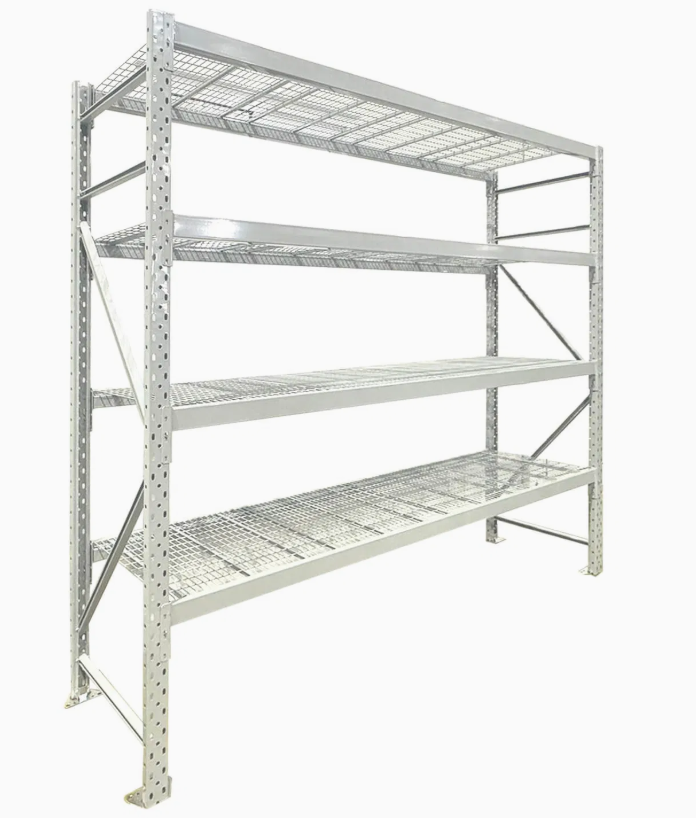
Long-span shelving is a popular storage solution for warehouses, stockrooms, workshops, factories, and offices. This heavy-duty system is designed to store large, bulky, or long items efficiently.

We have a great stock of 18” and 24” deep frames. They’re ideal for tire storage. Whether it’s a tire storage warehouse, automotive dealership, mechanic’s garage, or even a home garage, these frames are a perfect fit.
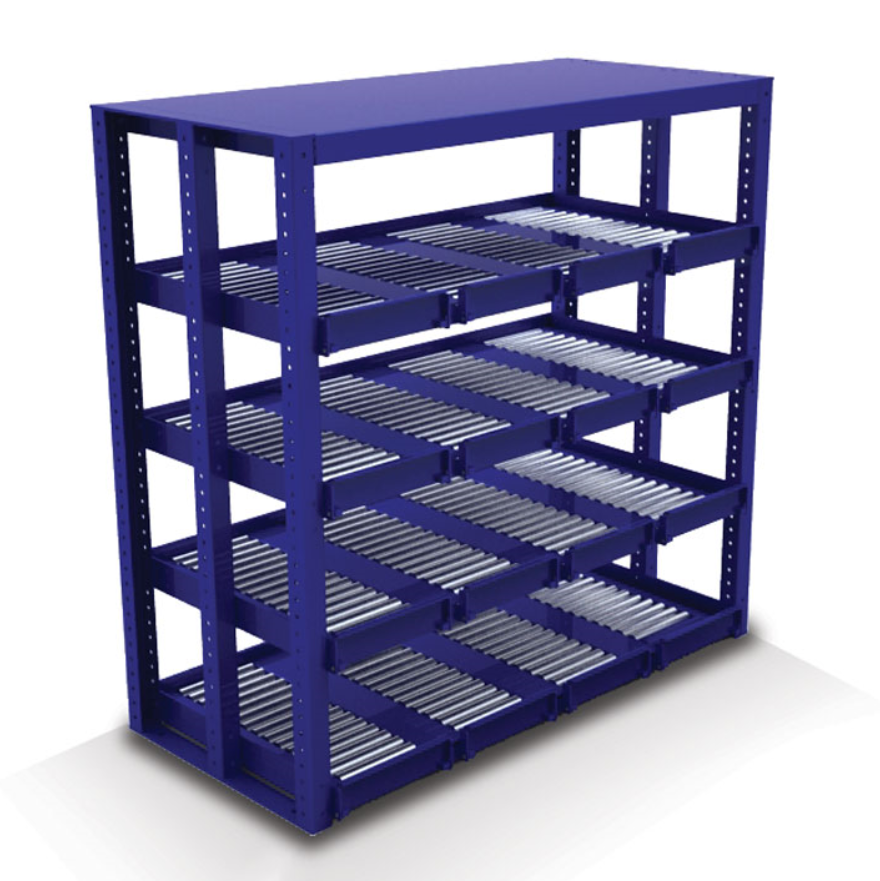
Our Heavy Duty Gravity Flow Racks make it easy to access heavy boxes and parts while maximizing storage efficiency. We offer custom options with steel rollers in various diameters. Choose the right heavy-duty box, and items behind it will automatically slide to the front, making order picking both easy and ergonomic.
A storage rack epitomizes a structural archetype crafted predominantly from materials such as steel, comprising frameworks and junctures dedicated to the orderly retention of goods within warehouses or storage edifices. Refers to a racking system where sundry items and commodities, often amassed on pallets, are methodically stored. Integral to the architectural framework of a warehouse, storage racks are devised to maximize spatial utilization and orchestrate .

Here are some key aspects of these racks:
Adjustable Height: The ability to adjust the height of the shelves allows for accommodation of items of varying sizes, enhancing the usage efficiency of the storage space. This adaptability is particularly valuable in industries where inventory sizes can vary significantly, such as in parts manufacturing, warehousing, and retail.
Modular Parts: The modular nature of these racks means that components like beams, uprights, and shelves can be easily added, removed, or rearranged. This modularity supports quick responses to changes in storage requirements without necessitating the purchase of new racking systems.
Capacity to Handle Heavy Loads: The substantial load-bearing capacity makes these racks suitable for storing heavy items such as machinery parts, bulk goods, and large containers. This capability ensures that the racks can serve a wide range of industrial needs, from light commercial items to heavy industrial materials.
Efficient Use of Space: By utilizing vertical space and allowing for the customization of shelf arrangements, these racks can greatly increase the storage density of a facility. This efficient use of space is crucial for maximizing the storage capacity of any given area, making it possible to store more goods within a smaller footprint.
Durability: Racks with such a high load-bearing capacity are typically constructed with robust materials that can withstand the rigors of heavy and continuous use. This durability reduces the need for frequent replacements and maintenance, providing long-term reliability and cost savings.
These features make such storage racks an excellent investment for businesses that require durable, flexible, and efficient storage solutions capable of adapting to various operational demands. Whether for a warehouse, a manufacturing facility, or a retail backroom, these racks can be configured to meet specific storage requirements while ensuring the safety and accessibility of stored items.

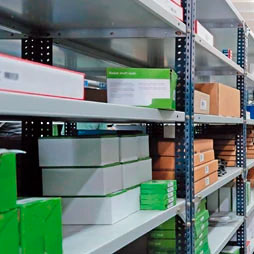
Here’s a deeper look into how these systems benefit warehouse operations:
Optimized Space Utilization: Storage racks utilize vertical space effectively, allowing warehouses to store more goods within the same square footage. This capability is particularly crucial in urban areas where warehouse space is expensive and limited.
Enhanced Organization: With well-designed storage racks, items can be organized methodically, facilitating easy access and inventory management. This organization helps in reducing the time workers spend searching for items, thus speeding up both the stocking and retrieval processes.
Improved Efficiency: A well-organized storage system directly contributes to operational efficiency. Workers can locate and move goods more quickly, which reduces turnaround times and enhances productivity. This improvement in workflow not only speeds up operations but also minimizes the likelihood of errors.
Scalability and Flexibility: Modern storage racks are designed to be modular and adjustable. This design allows for easy expansion or reconfiguration based on changing business needs or seasonal inventory fluctuations. Such flexibility ensures that the storage system can grow and adapt with the business without requiring complete overhauls.
Increased Safety: Properly designed and installed storage racks reduce the risk of workplace accidents. They ensure that heavy items are securely stored and that the overall environment is less cluttered, which is crucial for maintaining a safe workspace.
Cost Efficiency: By maximizing the use of space and enhancing operational efficiency, storage racks reduce the need for additional physical expansion. They also help in lowering labor costs by optimizing the workflow, which can significantly impact the bottom line over time.
By integrating these sophisticated storage systems, warehouses can achieve a high level of order and efficiency, transforming the physical management of goods into a strategic asset. This transformation not only supports immediate operational needs but also positions the warehouse to better handle future growth and changes in demand.
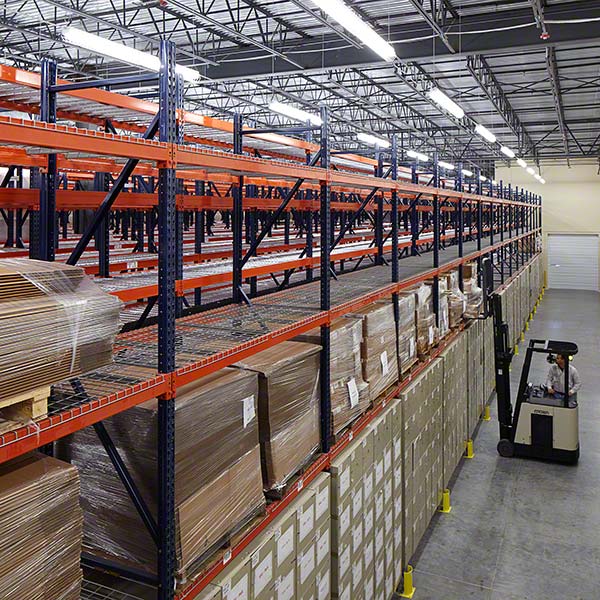

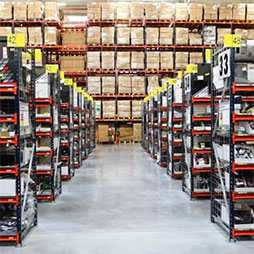
JY Shop Fitting’s Slatwall gondola shelving is the perfect choice for store owners with diverse needs. Whether for a garage, fashion store, or grocery store, our systems provide flexibility, durability, and style. Contact us to find the ideal shelving solution for your store, and for any inquiries, our team is here to assist.
Explore our range and transform your retail space today!
Display racks have a wide range of applications in a variety of industries.
Retail Stores: Displays are commonly used in retail environments to showcase products such as apparel, electronics, cosmetics and food.
Trade Shows and Exhibitions: At trade shows, displays attract visitors by effectively displaying product samples, brochures and promotional materials. They need to be portable and easy to install.
Offices and Businesses: In offices, displays can be used to organize files, present awards or display company information.
Restaurants and cafes: Displays can be used for menu presentations, promotional signage and to display daily specials. They enhance the dining experience by providing customers with easy access to information.
Museums and Galleries: In cultural institutions, display racks are used to showcase artifacts, brochures or exhibition catalogs. They help to present information in an organized manner while ensuring the safety of the items on display.
Home use: Displays can also be used in the home to organize books, collectibles or decorative items. They enhance the interior decor while keeping the space tidy.
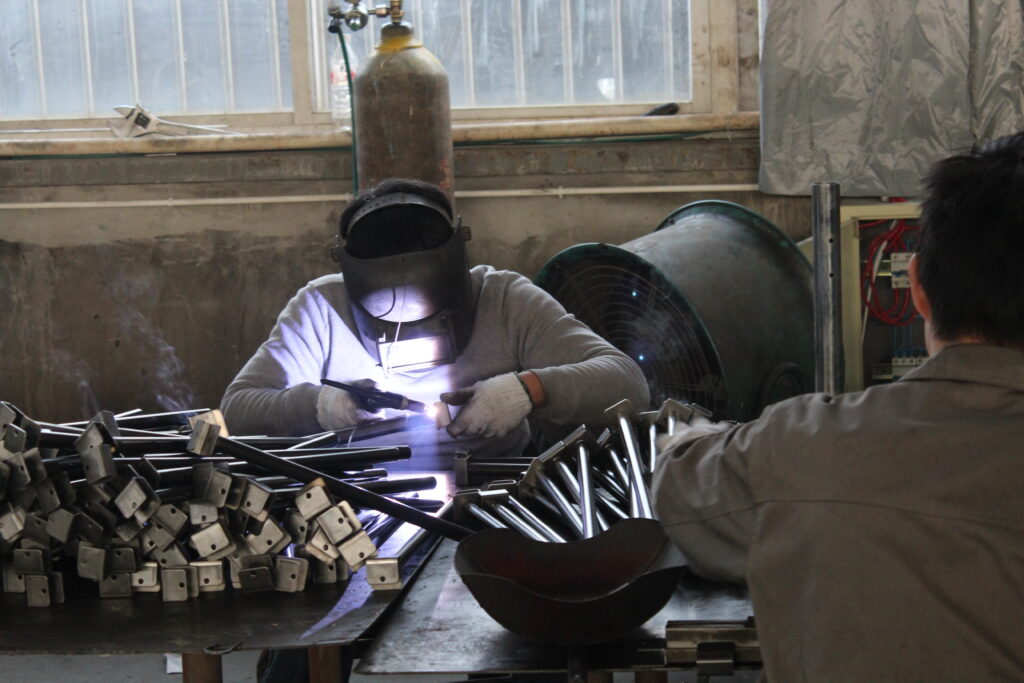
12 years Supermarket Racks Manufacturers In China,Warmly welcome to sent inquiry.

TUV Certificate

BSCI Certificate
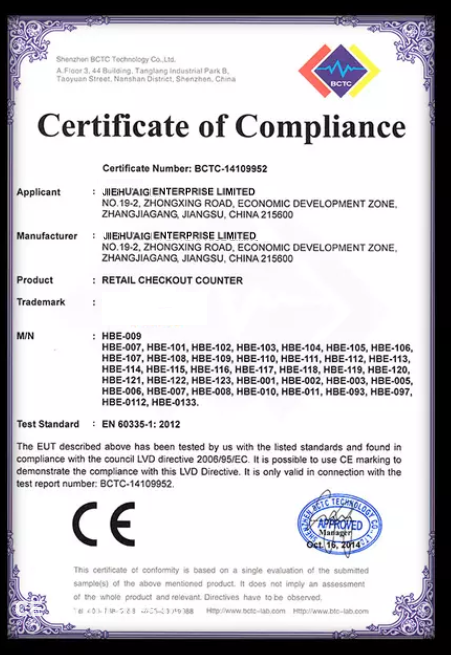
CE

Send us your drawings and get a Quotations in 2 days
Experience zero-cost innovation and turn your ideas into reality!
john@shopfittingmanufacturer.com

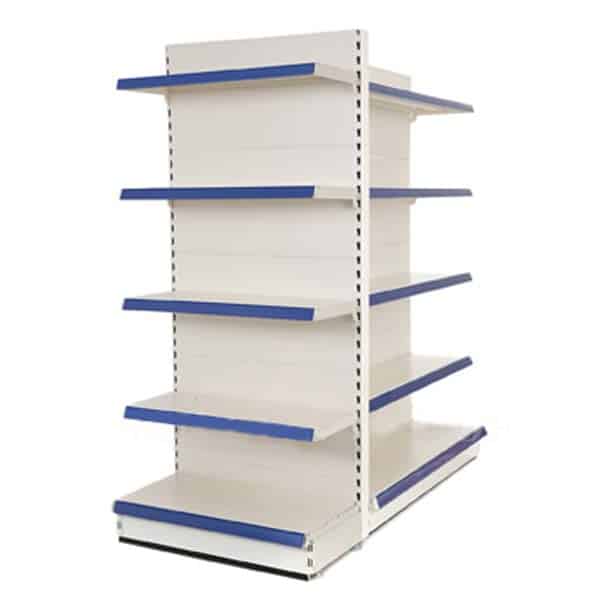




Store aesthetics directly affect cu
The smart shelf market has grown f
Grocery store shelves serve mu
The smart shelf market continues to
Supermarket shelving systems reach
Cold-rolled steel provides up to 20
Checkout counter design requir
Gondola shelving remains one of th
Retail display stands can revolutio
Retail spaces that update their sho
When it comes to optimizing space and improving efficiency in warehouses, retail stores, or industrial facilities, choosing the right storage racking system is crucial. The right setup not only maximizes storage capacity but also enhances workflow, safety, and accessibility. This guide breaks down the most common types of storage racking, their unique benefits, and how to determine which system best fits your needs.
Pallet racking systems are the go-to solution for businesses that need to store large quantities of heavy goods. These systems are designed to hold palletized loads and are widely used in warehouses and distribution centers.
Key Variations:
Selective Pallet Racking: The most common type, allowing direct access to every pallet. Ideal for facilities with a high turnover of diverse SKUs.
Drive-In/Drive-Through Racking: Built for high-density storage. Forklifts drive directly into the racks, making it perfect for bulk storage of uniform products (e.g., beverages, seasonal items).
Push-Back Racking: Uses a gravity-fed system where pallets are loaded from one side and retrieved from the other. Great for FIFO (First-In, First-Out) inventory management.
Best For: Warehouses storing heavy, palletized goods like appliances, automotive parts, or bulk food items.
Cantilever racks feature horizontal arms supported by vertical columns, eliminating the need for front-facing posts. This design makes them ideal for storing long, oversized items that don’t fit on traditional shelves.
Common Uses:
Construction materials (pipes, lumber)
Furniture, carpets, or rolled textiles
Automotive parts (exhaust pipes, trim)
Benefits: Easy access to irregularly shaped items and adjustable arm heights to accommodate varying loads.
Shelving units are a flexible option for lighter items and are often used in retail stockrooms, workshops, or archives.
Popular Types:
Wire Shelving: Durable, ventilated shelves that resist dust buildup. Common in grocery store backrooms or pharmaceutical storage.
Mobile Shelving: Mounted on tracks to compress aisles, saving up to 50% of floor space. Ideal for offices or libraries with limited space.
Cantilever Shelving: Similar to cantilever racking but scaled down for smaller items like tools or hardware.
Pro Tip: Add dividers or bins to keep small parts organized.
Mezzanine racks add a second level to your existing space, effectively doubling storage capacity without expanding the building footprint. They’re customizable with staircases, guardrails, and even integrated shelving.
Ideal For:
Retail stores needing extra stockroom space
Manufacturing facilities with assembly line overflow
E-commerce fulfillment centers
Safety Note: Ensure compliance with local building codes and weight limits.
Carton flow systems use gravity rollers to move cases from the loading end to the picking face. This setup ensures older stock is used first (FIFO) and reduces labor time.
Where It Shines:
Cold storage facilities (e.g., perishable goods)
High-volume distribution centers
Pharmaceutical or electronics industries
Bonus: Pair with automated inventory systems for real-time stock tracking.
These systems mount shelving units on mobile carriages that glide along tracks, eliminating fixed aisles. A single access aisle can serve multiple rows, making them perfect for space-starved environments.
Use Cases:
Archival document storage
Retail backrooms in urban locations
Museums or art storage
Drawback: Higher upfront cost due to mechanical components.
Made from slotted steel angles and bolts, these racks are DIY-friendly and adjustable. They’re a cost-effective choice for startups or businesses with evolving needs.
Typical Applications:
Garage or workshop storage
Pop-up retail displays
Seasonal inventory overflow
Limitation: Lower weight capacity compared to welded systems.
For high-tech operations, AS/RS uses robotics and software to store and retrieve items with minimal human intervention. These systems include vertical lift modules (VLMs) and horizontal carousels.
Who Needs It:
High-volume e-commerce warehouses
Industries with hazardous materials
Facilities prioritizing precision and speed
Cost Consideration: Significant investment but unmatched efficiency gains.
eed Help? Explore our Shop Fitting Services or contact our team for a free storage audit.
In today’s fast-paced commercial landscape, storage shelves are no longer mere static structures—they are dynamic solutions tailored to meet the unique demands of diverse industries. From retail to pharmaceuticals, manufacturing to cold chain logistics, the right shelving system can revolutionize inventory management, maximize space utilization, and streamline operations. Below, we explore the key industries leveraging storage shelves and how these systems address their specific challenges.
1. Retail & E-commerce: Balancing Speed and Density
Retailers and e-commerce giants face relentless pressure to manage high-volume SKUs while ensuring rapid order fulfillment. Here, shuttle racking systems and high-density mobile shelving shine. Shuttle systems, like those powered by GALAXIS Technology’s FWS four-way shuttle cars1, enable automated, high-speed storage and retrieval in compact spaces—ideal for warehouses handling thousands of daily orders. Meanwhile, mobile shelving adapts to fluctuating inventory needs, allowing retailers to reconfigure layouts seasonally without sacrificing floor space2.
For instance, GALAXIS’ AMR (Autonomous Mobile Robot) solutions1 enhance efficiency in e-commerce hubs by automating goods-to-person picking, reducing walk time for workers and accelerating order processing. Such systems are particularly valuable for brands like OPPO and SF Express, which rely on precision and scalability1.
2. Pharmaceuticals: Precision and Compliance
Pharmaceutical storage demands stringent temperature control, traceability, and compliance with regulatory standards. Gravity flow racks and automated vertical lift modules (VLMs) are widely adopted here. Gravity shelves, with their FIFO (First-In, First-Out) design, ensure proper stock rotation and minimize human intervention, critical for perishable medications2. GALAXIS’ integration of AI-driven warehouse management systems (WMS) further enhances real-time inventory tracking and reduces errors1.
Notably, GALAXIS has supported pharmaceutical giants like Jointown Pharmaceutical Group in constructing over 100 modernized logistics centers1, emphasizing secure, high-density storage tailored to medical supply chains.
3. Food & Beverage: Durability and Hygiene
The food industry prioritizes hygiene, weight capacity, and ease of cleaning. Drive-in racks dominate this sector due to their cost-effectiveness and ability to handle bulk palletized goods like beverages or canned products2. For perishables requiring FIFO access, push-back racks offer a balance between density and accessibility, with GALAXIS’ shuttle systems enabling efficient cold storage management12.
In Japan and South Korea, GALAXIS’ tray-based shuttle systems1 are deployed in food distribution centers, optimizing space utilization to over 90% while maintaining strict sanitation protocols.
4. Automotive & Manufacturing: Heavy-Duty Flexibility
Automotive parts and heavy machinery require robust shelving capable of supporting substantial loads. Heavy-duty mobile racks and cantilever shelves are staples here. Mobile systems allow manufacturers to consolidate aisle space, while cantilever designs accommodate irregularly shaped items like pipes or engine components2. GALAXIS’ hybrid solutions, combining AMRs with modular shelving, enable just-in-time part delivery in factories, reducing downtime and improving workflow1.
5. Cold Chain Logistics: Surviving Extreme Conditions
Freezers and cold storage facilities demand shelving that withstands sub-zero temperatures without compromising efficiency. Shuttle racking excels here, as automated systems minimize worker exposure to harsh environments. GALAXIS’ cold chain solutions, featuring corrosion-resistant materials and AI-optimized retrieval paths, are deployed globally to ensure seamless operations in frozen food and vaccine storage12.
6. Libraries & Archives: Space-Efficient Preservation
Libraries and document archives benefit from compact mobile shelving, which transforms limited spaces into high-capacity storage zones. GALAXIS’ customized solutions for libraries include humidity-controlled racks and automated retrieval systems, safeguarding rare books while enabling quick access1.
7. Semiconductor & Electronics: Precision Handling
Fragile electronics and semiconductor components require anti-static, vibration-resistant shelving. Automated multi-deep AS/RS (Automated Storage and Retrieval Systems) dominate this niche, offering contamination-free storage and ultra-precise inventory control. GALAXIS’ semiconductor AMHS (Automated Material Handling Systems)1 integrate robotic arms and modular shelving to handle wafers and microchips, ensuring zero-defect workflows.
8. Renewable Energy: Scaling Sustainably
The renewable energy sector, particularly battery and solar panel storage, relies on customized cantilever racks and modular shelving to organize bulky, high-value components. GALAXIS’ solutions for新能源 (new energy) clients emphasize scalability, supporting rapid expansion as demand for green tech grows1.
Conclusion: Future-Proofing with Smart Shelving
As industries evolve, the integration of IoT, AI, and robotics into storage systems is no longer optional—it’s imperative. Companies like GALAXIS Technology exemplify this shift, blending hardware innovation (e.g., FWS shuttles, AMRs) with intelligent software to deliver adaptable, future-ready solutions1. Whether optimizing a boutique retail store or a semiconductor fab, the right shelving system transforms logistical challenges into competitive advantages.
In today’s fast-paced retail and commercial environments, optimizing space and streamlining operations are non-negotiable. Storage racks, often overlooked as simple shelving solutions, are foundational to achieving these goals. Whether you’re designing a boutique retail space or retrofitting a warehouse, understanding the advantages of storage racks can transform how you manage inventory, maximize square footage, and enhance operational efficiency. Let’s explore why these systems are indispensable for businesses aiming to thrive in competitive markets.
1. Space Optimization: Unlocking Vertical Potential
One of the most immediate benefits of storage racks is their ability to maximize vertical space. Traditional floor-based storage often wastes valuable square footage, but racks allow businesses to stack products upward—transforming underutilized airspace into functional storage2. For shop fitting, this is particularly valuable in retail backrooms or compact urban storefronts where floor space is limited.
Industrial-grade racks, like pallet storage systems, can handle heavy loads while maintaining stability, enabling warehouses to store bulk inventory without compromising safety3. Even in retail settings, vertical shelving units like gondola racks or slatwall panels create visually appealing displays while doubling as storage solutions for overstock2.
2. Enhanced Organization & Accessibility
Cluttered spaces slow down workflows and frustrate employees. Storage racks introduce systematic organization, allowing businesses to categorize products by type, size, or demand frequency. For example, a clothing retailer might use garment racks to separate seasonal collections, while a hardware store could employ bin shelving for small parts2.
Improved accessibility is another key advantage. Unlike disorganized piles or boxes, racks provide clear visibility and easy retrieval paths. In warehouses, used pallet racks (a cost-effective alternative to new systems) ensure forklift operators can navigate aisles efficiently, reducing time spent searching for items3. For shops, this translates to faster restocking and smoother customer service.
3. Inventory Control & Traceability
Effective inventory management hinges on real-time visibility. Modern storage racks integrate seamlessly with warehouse management systems (WMS) or retail inventory software, enabling accurate stock tracking1. For instance, barcode-labeled racks allow staff to scan items directly from shelves, minimizing human error during audits or order fulfillment.
In shop fitting, this precision is critical. A boutique using modular shelving can quickly identify low-stock items and reorder before shortages occur. Similarly, warehouses leveraging automated retrieval systems (AS/RS) paired with racks achieve near-flawless inventory accuracy—though even manual rack systems significantly improve traceability compared to chaotic storage methods13.
4. Durability & Safety
Storage racks are engineered for longevity. Constructed from heavy-duty steel or reinforced materials, they withstand years of use without warping or collapsing—a vital feature for industries handling bulky or fragile goods2. Reduced wear and tear also translates to lower maintenance costs over time1.
Safety is another priority. Properly anchored racks minimize the risk of accidents, such as tipping or falling merchandise. Automated systems take this further by limiting human interaction with heavy loads, but even standard racks promote safer workflows by eliminating tripping hazards and ensuring orderly aisles12. For shop fitters, this means designing spaces that comply with occupational safety standards while protecting both staff and merchandise.
5. Cost-Effective Scalability
Businesses evolve, and storage needs change. Storage racks offer modular flexibility, allowing companies to expand or reconfigure layouts as required. For example, a startup retailer might begin with basic wall-mounted shelves and later add freestanding units to accommodate growth2. Used pallet racks are a budget-friendly option here, providing the same structural integrity as new systems at a fraction of the cost3.
Automated storage solutions (AS/RS) represent a higher initial investment but deliver long-term savings through labor reduction and error minimization1. However, even non-automated racks slash operational costs by optimizing labor efficiency—employees spend less time organizing and more time on revenue-generating tasks.
6. Aesthetic Versatility in Shop Fitting
Storage racks aren’t just functional; they’re also design assets. In retail environments, sleek slatwall panels or chrome-finish shelving can elevate a store’s aesthetic while showcasing products attractively2. For example, a boutique might use minimalist floating shelves to highlight luxury items, while a grocery store could employ sturdy gondola racks for easy customer access.
Customizable configurations let businesses align storage with brand identity. Adjustable shelf heights, color-matched finishes, and integrated lighting are just a few ways racks enhance visual appeal without sacrificing utility.
7. Sustainability & Reduced Waste
Efficient storage systems contribute to sustainability goals. By minimizing product damage (through secure racking) and reducing overstocking (via better inventory control), businesses cut down on waste12. Used pallet racks further support eco-friendly practices by repurposing existing materials rather than consuming new resources3.
Choosing the Right Storage Racks for Your Business
To reap these advantages, consider the following:
Load Requirements: Heavy-duty industrial racks suit warehouses, while lightweight options work for retail.
Space Constraints: Measure ceiling height and floor area to optimize vertical and horizontal layouts.
Budget: Balance upfront costs (e.g., used vs. new racks) with long-term ROI23.
Partnering with experienced manufacturers ensures tailored solutions. Companies like Aavon Steels, for instance, specialize in designing racks that align with specific operational needs2.
Final Thoughts
From sprawling warehouses to chic retail spaces, storage racks are the backbone of efficient operations. They empower businesses to do more with less—saving time, money, and space while fostering safer, more organized environments. As shop fitting continues to evolve, integrating smart storage solutions will remain a cornerstone of competitive success.
By leveraging these advantages, businesses can future-proof their operations and stay ahead in an increasingly demanding market.
In the world of retail, warehousing, and commercial spaces, storage shelves are far more than static structures—they’re dynamic tools that shape efficiency, aesthetics, and functionality. With advancements in materials, automation, and design philosophies, today’s storage shelving solutions cater to diverse needs, from maximizing space in cramped urban stores to streamlining operations in sprawling warehouses. This article dives into the most impactful storage shelf designs transforming the shop fitting industry, offering insights into their unique benefits and applications.
1. Modular Shelving Systems: Flexibility at Its Core
Modular shelving is the Swiss Army knife of storage solutions. Designed with interchangeable components, these systems allow businesses to adapt layouts on the fly without requiring costly overhauls. For example, retailers can adjust shelf heights to accommodate seasonal inventory shifts, while warehouses can expand storage capacity by adding vertical tiers.
Key Features:
Adjustable Heights: Slotted uprights and movable shelves enable customization.
Interchangeable Accessories: Add hooks, bins, or dividers for specialized storage.
Scalability: Start small and expand as business needs grow.
Ideal For:
Pop-up shops needing quick reconfiguration.
E-commerce fulfillment centers handling variable product sizes.
Case in point: A boutique clothing store in London uses modular slatwall panels to rotate displays weekly, keeping the shopping experience fresh without structural changes.
2. Cantilever Racks: Mastering Bulk & Irregular Loads
Cantilever racks are the go-to solution for storing long, bulky, or irregularly shaped items like pipes, timber, or furniture. Their open-front design eliminates vertical supports, providing unobstructed access to stored goods.
Key Features:
Heavy-Duty Arms: Steel arms extend from a central column, supporting up to 5,000 lbs per tier.
Adjustable Spacing: Customize arm positions to fit item lengths.
Versatile Configurations: Single-sided (wall-mounted) or double-sided (aisle-accessible).
Ideal For:
Hardware stores storing lumber or PVC pipes.
Automotive shops organizing exhaust systems or roll cages.
A U.S.-based hardware chain reported a 30% reduction in loading times after switching to cantilever racks, thanks to easier forklift access.
3. Mobile Shelving: Compact Storage, Maximum Density
When floor space is premium, mobile shelving systems shine. These units glide on tracks, eliminating fixed aisles and condensing storage into a single compact block. A simple crank or electric motor shifts entire shelving rows, creating temporary aisles only where needed.
Key Features:
Space Savings: Increases storage density by up to 80%.
Locking Mechanisms: Ensure stability during seismic activity or accidental impacts.
Customizable Weight Limits: Options range from light-duty (documents) to heavy-duty (industrial parts).
Ideal For:
Archives, libraries, or pharmacies storing sensitive records or medications.
Urban retail backrooms with limited square footage.
A Tokyo-based pharmacy uses mobile shelving to store over 10,000 SKUs in a 200 sq ft room, freeing up floor space for customer-facing areas.
4. Pallet Racking: Backbone of Industrial Storage
Pallet racking systems dominate warehouses, offering robust frameworks for bulk storage. Variations like selective racks, drive-in racks, and push-back racks cater to different inventory turnover rates.
Selective Racks: Direct access to every pallet (ideal for fast-moving goods).
Drive-In Racks: High-density storage with last-in, first-out (LIFO) access for slow-turnover items.
Push-Back Racks: Multi-deep storage on inclined rails, balancing density and accessibility.
Key Features:
Load Capacity: Supports up to 30,000 lbs per pallet position.
Forklift-Friendly: Wide aisles and durable frames withstand heavy machinery.
Ideal For:
Food distribution centers storing palletized beverages or canned goods.
Manufacturing plants managing raw materials.
A German automotive parts supplier reduced warehouse footprint by 40% after adopting push-back racks for seasonal inventory.
5. Wire Shelving: Hygiene & Visibility Combined
Wire shelving, constructed from welded steel mesh, offers unmatched airflow and visibility. Its open design makes it a favorite in industries prioritizing cleanliness and quick inspections.
Key Features:
Corrosion Resistance: Epoxy-coated or stainless steel options for damp environments.
Easy Cleaning: No crevices for dust or debris accumulation.
Lightweight: Often portable for temporary setups.
Ideal For:
Commercial kitchens or bakeries storing perishables.
Retail stores displaying produce or DIY tools.
A New York bakery uses stainless steel wire shelves to comply with health codes while showcasing fresh bread and pastries.
6. Automated Storage & Retrieval Systems (AS/RS): The Future of Efficiency
AS/RS integrates robotics, software, and high-density shelving to automate inventory management. Mini-load systems handle small items in bins, while unit-load cranes manage palletized goods.
Key Features:
24/7 Operation: Robots retrieve items faster than human workers.
Space Optimization: Ultra-narrow aisles and vertical stacking.
Real-Time Tracking: Syncs with WMS for precise inventory control.
Ideal For:
High-volume e-commerce warehouses (e.g., Amazon fulfillment centers).
Semiconductor plants storing fragile components.
A South Korean e-commerce giant cut order processing times by 60% after deploying AS/RS with AI-driven predictive stocking.
7. Floating Shelves: Aesthetic Meets Functionality
Floating shelves, mounted without visible brackets, blend seamlessly into modern retail interiors. They’re perfect for creating minimalist displays while maximizing wall space.
Key Features:
Sleek Design: Enhances store aesthetics.
Weight Options: From lightweight decor (10 lbs) to reinforced models (200+ lbs).
Custom Finishes: Match shelving to brand colors or textures.
Ideal For:
Boutiques showcasing jewelry, books, or luxury goods.
Cafés displaying merchandise or decorative items.
A Milan-based fashion retailer uses floating walnut shelves to highlight handbags, creating a gallery-like shopping experience.
8. Gondola Shelving: Retail’s Workhorse
Gondola shelving—freestanding double-sided units—are staples in supermarkets and convenience stores. Their modular design supports adjustable shelves, pegboards, and signage.
Key Features:
High Traffic Resilience: Durable steel frames handle constant customer interaction.
Versatile Merchandising: Add lighting, hooks, or label holders.
Easy Assembly: Boltless designs for quick setup.
Ideal For:
Grocery stores organizing snacks, beverages, or household goods.
Pharmacies displaying over-the-counter products.
A Canadian grocery chain increased impulse purchases by 15% after optimizing gondola layouts with eye-level product placement.
9. Corner Shelving: Conquering Dead Spaces
Corner shelves transform underutilized angles into functional storage zones. Angled or rotating designs ensure easy access to items in tight spaces.
Key Features:
Space-Saving: Fits snugly into 90-degree corners.
Lazy Susan Options: Rotating tiers for 360-degree access.
Custom Depths: Shallow for display, deep for bulk storage.
Ideal For:
Retail stores maximizing small floor plans.
Warehouses storing seldom-used items.
A Sydney boutique uses corner shelving with rotating displays to showcase skincare samples, driving customer engagement.
10. Eco-Friendly Shelving: Sustainable Shop Fitting
With sustainability a growing priority, shelves made from recycled materials or modular designs that reduce waste are gaining traction. Bamboo, reclaimed wood, and recyclable steel options cater to eco-conscious brands.
Key Features:
Low Carbon Footprint: Materials like recycled aluminum.
Durability: Engineered to match traditional shelving lifespans.
Certifications: FSC-certified wood or GREENGUARD ratings.
Ideal For:
Eco-retailers promoting green lifestyles.
Offices aiming for LEED certification.
A California zero-waste store uses reclaimed barn wood shelves to align with its sustainability ethos, attracting environmentally aware shoppers.
Choosing the Right Design: Key Considerations
Load Requirements: Assess weight per shelf (e.g., 50 lbs for books vs. 2,000 lbs for machinery).
Space Constraints: Measure ceiling height, floor area, and aisle width.
Aesthetic Goals: Match shelving finishes to brand identity (industrial, rustic, modern).
Budget: Balance upfront costs with lifecycle savings (e.g., AS/RS reduces labor costs long-term).
Conclusion: Elevating Spaces with Smart Shelving
Storage shelf designs are no longer one-size-fits-all. From space-saving mobile units to AI-driven AS/RS, modern solutions empower businesses to optimize operations, enhance customer experiences, and adapt to evolving needs. By selecting designs aligned with specific operational and aesthetic goals, shop fitters can transform cluttered spaces into streamlined, revenue-driving environments.
Whether retrofitting a historic boutique or equipping a cutting-edge warehouse, the right shelving design is a strategic investment—one that pays dividends in efficiency, safety, and brand appeal.
In the world of shop fitting, storage shelves are more than functional necessities—they’re foundational elements that influence aesthetics, durability, and operational efficiency. The material choice directly impacts a shelf’s lifespan, weight capacity, and suitability for specific environments, from humid kitchens to high-traffic retail floors. This guide breaks down the most common and innovative materials used in storage shelving, helping businesses make informed decisions that align with their practical and branding needs.
1. Steel: The Industrial Powerhouse
Steel is the go-to material for heavy-duty storage solutions, prized for its strength, longevity, and cost-effectiveness. It dominates warehouses, factories, and large-scale retail environments where load capacity and durability are non-negotiable.
Key Features:
Types:
Cold-Rolled Steel: Smoother finish, resistant to warping, ideal for precision applications.
Hot-Rolled Steel: Rougher texture, more affordable, commonly used in industrial racks.
Stainless Steel: Corrosion-resistant, perfect for food processing or pharmaceutical storage.
Load Capacity: Supports up to 5,000 lbs per shelf when reinforced.
Finish Options: Powder-coated (color customization), galvanized (rust-proof), or raw (budget-friendly).
Advantages:
Fire-resistant and non-combustible.
Easily welded or bolted for modular configurations.
Low maintenance—wipe clean with minimal effort.
Drawbacks:
Prone to scratches and dents in high-impact environments.
Heavyweight complicates reconfiguration.
Ideal For:
Warehouses storing machinery parts or palletized goods.
Butcher shops or commercial kitchens requiring hygiene (stainless steel).
Case Study: A U.K.-based automotive warehouse reduced product damage by 25% after switching to powder-coated steel shelving, which resisted oil and chemical corrosion.
2. Wood: Classic Aesthetics Meets Versatility
Wooden shelves bring warmth and organic charm to retail spaces, cafes, and boutiques. While less common in heavy industrial settings, they excel in environments prioritizing visual appeal and customizability.
Key Types:
Hardwood (Oak, Maple, Walnut): Dense, scratch-resistant, and long-lasting.
Softwood (Pine, Cedar): Lightweight and affordable but prone to dents.
Engineered Wood (Plywood, MDF): Budget-friendly, uniform texture, but vulnerable to moisture.
Key Features:
Load Capacity: Varies widely—hardwood shelves hold 200–500 lbs, while MDF maxes out at 100 lbs.
Finish Options: Stained, painted, or sealed with polyurethane for water resistance.
Advantages:
Easily customized with carvings, edge profiles, or branded engravings.
Naturally insulates against temperature fluctuations.
Sustainable option when sourced from FSC-certified suppliers.
Drawbacks:
Susceptible to warping in humid environments.
Requires regular maintenance (sanding, resealing).
Ideal For:
Boutiques, bookstores, or farm-to-table markets aiming for rustic or vintage aesthetics.
Home goods stores using floating wooden shelves for display.
Case Study: A Berlin coffeehouse chain used reclaimed oak shelves to create a cozy, eco-conscious ambiance, boosting customer dwell time by 20%.
3. Plastic: Lightweight and Corrosion-Resistant
Plastic shelving is a favorite for light-duty storage in environments where moisture, chemicals, or hygiene are concerns. Advances in polymer engineering have made modern plastic shelves sturdier and more adaptable than ever.
Key Types:
Polypropylene (PP): Chemical-resistant, used in labs or cleaning supply storage.
High-Density Polyethylene (HDPE): UV-resistant, ideal for outdoor or garden centers.
Acrylic: Transparent option for displaying cosmetics or small goods.
Key Features:
Load Capacity: Typically 50–200 lbs per shelf.
Modularity: Snap-together designs enable quick assembly without tools.
Advantages:
Immune to rust, rot, and insect damage.
Non-porous surface prevents bacterial growth.
Lightweight and portable for pop-up shops or temporary setups.
Drawbacks:
Can become brittle in extreme cold.
Not suitable for heavy or sharp-edged items.
Ideal For:
Pharmacies, salons, or clinics storing sanitized products.
Greenhouses or poolside shops needing UV-resistant storage.
Case Study: A Tokyo sushi franchise used NSF-certified HDPE shelves in its kitchen, meeting strict health codes while surviving daily steam cleaning.
4. Wire Mesh: Maximizing Airflow and Visibility
Wire mesh shelves, constructed from welded steel or aluminum rods, offer unparalleled ventilation and transparency. Their open design makes them ideal for perishables or items requiring frequent inspection.
Key Features:
Materials:
Epoxy-Coated Steel: Affordable and rust-resistant.
Stainless Steel: Premium option for sterile environments.
Aluminum: Lightweight and corrosion-proof.
Load Capacity: 300–1,500 lbs depending on wire thickness and gauge.
Advantages:
Prevents moisture buildup (critical for produce or floral storage).
Easy to clean—debris falls through gaps rather than accumulating.
Compatible with dividers or liners for small-item organization.
Drawbacks:
Not ideal for tiny items that could slip through gaps.
Can dent under uneven weight distribution.
Ideal For:
Supermarkets displaying fruits, vegetables, or baked goods.
Garages storing tools or automotive fluids.
Case Study: A California grocery chain reduced spoilage rates by 15% after installing stainless steel wire shelves in its produce section.
5. Glass: Sleek Modernity for High-End Retail
Glass shelves lend a premium, minimalist look to luxury stores, jewelry shops, or contemporary homes. Tempered safety glass is the standard, offering strength and shatter-resistance.
Key Features:
Types:
Tempered Glass: Heat-treated for 4–5x the strength of regular glass.
Frosted or Tinted Glass: Adds privacy or brand-specific styling.
Load Capacity: 50–150 lbs for tempered glass (thickness-dependent).
Advantages:
Enhances lighting by reflecting ambient or LED lights.
Creates an illusion of space in small retail environments.
Non-porous and easy to sanitize.
Drawbacks:
High cost compared to other materials.
Requires frequent cleaning to maintain streak-free clarity.
Ideal For:
Jewelry stores showcasing watches or gemstones.
Cosmetic boutiques using backlit glass displays.
Case Study: A Milan luxury handbag retailer saw a 30% increase in engagement after installing curved glass shelves with integrated LED lighting.
6. Composite Materials: Innovation Meets Sustainability
Composite shelves blend materials like recycled plastics, wood fibers, or carbon fiber to create hybrid solutions with unique benefits. These are gaining traction in eco-conscious markets.
Key Types:
Wood-Plastic Composite (WPC): Mixes sawdust and polymers for outdoor-ready durability.
Carbon Fiber: Ultra-strong, lightweight, used in high-tech or aerospace storage.
Recycled Metal/Plastic: Diverts waste from landfills, appealing to green-certified businesses.
Key Features:
Load Capacity: Varies by blend—carbon fiber handles 1,000+ lbs, WPC up to 200 lbs.
Weather Resistance: WPC resists rot, UV rays, and insects.
Advantages:
Lower carbon footprint than virgin materials.
Often modular and recyclable at end-of-life.
Combines strengths of multiple materials (e.g., wood’s aesthetics + plastic’s moisture resistance).
Drawbacks:
Higher upfront cost than conventional options.
Limited availability in some regions.
Ideal For:
Eco-retail stores or LEED-certified offices.
Marine supply shops needing saltwater-resistant storage.
Case Study: A Vancouver zero-waste store used 100% recycled plastic composite shelves, aligning with its sustainability mission and attracting eco-aware clientele.
7. Concrete: Industrial-Chic and Ultra-Durable
Concrete shelves, often reinforced with steel rebar, offer a raw, industrial aesthetic with unmatched stability. Popular in avant-garde retail designs or rugged environments.
Key Features:
Load Capacity: 1,000+ lbs when properly engineered.
Customization: Pigmented, polished, or textured finishes.
Advantages:
Fireproof and immune to temperature fluctuations.
Can be cast into unique shapes (curved, cantilevered).
Low maintenance—resists scratches and impacts.
Drawbacks:
Extremely heavy, requiring reinforced flooring.
Long installation time due to curing.
Ideal For:
Urban apparel stores embracing industrial décor.
Breweries or distilleries storing heavy kegs or barrels.
Case Study: A Brooklyn sneaker boutique used polished concrete shelves to create a “raw luxury” vibe, driving social media buzz and foot traffic.
Choosing the Right Material: 5 Critical Factors
Environment: Consider humidity, temperature, and exposure to chemicals/UV rays.
Weight Requirements: Match load capacity to the heaviest item stored.
Aesthetic Goals: Align material finishes with brand identity (e.g., rustic wood vs. sleek glass).
Budget: Factor in long-term costs (maintenance, replacements).
Sustainability: Opt for recycled or FSC-certified materials to meet ESG goals.
Maintenance Tips for Prolonged Shelf Life
Steel: Wipe with dry cloths; reapply rust inhibitors if coating chips.
Wood: Polish annually with beeswax; avoid direct sunlight.
Plastic: Clean with mild soap; avoid abrasive scrubbers.
Glass: Use vinegar-water solutions to prevent streaks.
Conclusion: Material Mastery for Smart Shop Fitting
The material of your storage shelves isn’t just a practical choice—it’s a strategic business decision. Steel and wire mesh excel in demanding environments, wood and glass elevate retail aesthetics, while composites and plastics address niche needs like sustainability or portability. By understanding the pros, cons, and ideal applications of each material, shop fitters can create spaces that are as functional as they are visually compelling.
In an era where customers value both form and function, investing in the right shelving material can enhance operational efficiency, reinforce brand identity, and ultimately drive sales.
Why Customized Storage Racks Are Revolutionizing Shop Fitting
Space Optimization Without Compromise
Every square foot of retail or warehouse space is valuable. Off-the-shelf shelving often fails to address unique spatial challenges, leading to wasted areas or inefficient workflows. Customized racks, however, are engineered to maximize vertical and horizontal space utilization. For example, Proper Storage Systems’ roll-out shelving designs allow easy access to stored items while minimizing aisle space requirements2. Similarly, SPS Ideal Solutions offers foldable and stackable racks like the Roll Raptor, which adapt to tight spaces and reduce clutter1. These solutions ensure that even the most awkward corners of a shop or warehouse become functional storage zones.
Enhanced Safety and Ergonomics
Workplace injuries due to poor storage design can cripple productivity and lead to costly liabilities. Customized racks prioritize safety through features like reinforced steel frames, anti-slip surfaces, and ergonomic access points. Proper Storage Systems’ industrial shelving, for instance, includes roll-out racks with smooth-gliding mechanisms to reduce physical strain during tool retrieval2. Meanwhile, SPS’s designs incorporate rust and corrosion prevention to ensure long-term structural integrity1. By tailoring rack heights, depths, and load capacities to specific needs, businesses mitigate risks like overreaching or collapsing shelves.
Scalability for Evolving Business Needs
Retail and industrial spaces are dynamic—today’s storage requirements might not match tomorrow’s. Customized racks offer modularity, allowing businesses to reconfigure layouts as inventory grows or processes change. SPS Ideal Solutions’ adjustable racks, for example, can be expanded or partitioned to accommodate new product lines1. Proper Storage Systems takes this further with vertical storage solutions that comply with industry regulations (e.g., contamination prevention in pharmaceuticals)2. This scalability ensures that shop fitting investments remain relevant for years.
Industry-Specific Applications of Customized Racks
Custom storage racks aren’t a one-size-fits-all solution. Their true power lies in adaptability across sectors:
Retail & E-Commerce Fulfillment Centers
High-density racking systems with labeled bins streamline order picking, while display-ready shelving enhances in-store merchandising.
Automotive & Aerospace
Heavy-duty racks from Proper Storage Systems securely store engine parts, molds, and raw materials, reducing tooling changeover time by up to 40%2.
Manufacturing & Warehousing
SPS Ideal Solutions’ Roll Raptor eliminates outdated wooden roll-handling methods, offering steel racks that protect delicate materials during shipping1.
Healthcare & Pharmaceuticals
Vertical storage racks with contamination-resistant coatings ensure compliance with strict hygiene standards.
Key Features to Demand in Customized Storage Racks
When partnering with a shop fitting provider, prioritize racks that offer:
Material Durability: High-grade steel or aluminum construction (e.g., SPS’s rust-resistant designs)1.
Modularity: Interchangeable components for easy reconfiguration.
Safety Certifications: Compliance with OSHA or industry-specific regulations.
Portability: Foldable or wheeled racks for flexible layouts.
Aesthetic Integration: Powder-coated finishes that align with brand aesthetics.
Future Trends: Where Customization Meets Technology
The next wave of storage solutions integrates smart technology. Imagine racks with IoT-enabled sensors to track inventory in real-time or AI-driven systems that optimize space allocation based on usage patterns. Companies like SPS Ideal Solutions are already exploring innovations showcased at events like ICE USA, where automation and advanced fabrication techniques take center stage1. For shop fitting professionals, staying updated on these trends will be key to delivering cutting-edge solutions.
Conclusion: Investing in Tailored Efficiency
Customized storage racks are more than a shop fitting trend—they’re a strategic investment in operational excellence. By partnering with innovators like SPS Ideal Solutions and Proper Storage Systems, businesses unlock unparalleled efficiency, safety, and adaptability12. Whether optimizing a boutique retail space or a sprawling industrial warehouse, the right storage solution can transform clutter into clarity, chaos into order.
1. Why Storage Rack Maintenance Matters
Storage racks are subject to constant stress from heavy loads, frequent adjustments, and environmental factors. Neglecting maintenance can result in:
Direct losses: Collapsed racks damage goods, incur repair costs, and risk employee safety1.
Indirect impacts: Operational downtime and reputational harm from media coverage of accidents1.
Legal liabilities: Fines, lawsuits, and insurance complications due to non-compliance with safety standards1.
For shop fitting businesses, maintaining racks isn’t just about compliance—it’s about safeguarding your clients’ investments and operational continuity.
2. Common Risks Across the Rack Lifecycle
Storage rack risks span their entire lifecycle, from design to daily use. Understanding these vulnerabilities is key to mitigating them:
A. Design & Manufacturing Flaws
Design errors: Poor load distribution, inadequate stability calculations (e.g., ignoring height-to-width ratios), or failure to account for environmental factors like humidity or seismic activity1.
Manufacturing defects: Substandard materials, weak welds, or improper coatings that accelerate corrosion1.
Solution: Partner with suppliers adhering to international standards like GB/T 28576 (China) or CECS 23:90, which outline design and material specifications1.
B. Installation Mistakes
Improper vertical alignment of columns.
Missing safety components (e.g., anti-collision guards, lock pins)1.
Solution: Hire certified installers and conduct post-installation inspections using laser leveling tools to verify alignment.
C. Operational Hazards
Overloading: Exceeding weight limits or unevenly distributing loads.
Collisions: Forklift impacts damaging columns or beams.
Neglected inspections: Failing to identify cracks, rust, or bent components1.
Solution: Implement strict load protocols and collision-prevention measures, such as aisle markings and protective barriers.
3. A Step-by-Step Maintenance Framework
Proactive maintenance minimizes risks and extends rack lifespan. Here’s a structured approach:
Step 1: Routine Visual Inspections
Frequency: Weekly checks by onsite staff.
Focus areas:
Bent or misaligned beams.
Loose bolts or connectors.
Rust, corrosion, or paint peeling (indicates material degradation)1.
Step 2: Professional Audits
Frequency: Annually or biannually, depending on usage intensity.
Key tasks:
Load capacity verification using strain gauges.
Structural integrity tests for welds and joints.
Compliance reviews against local standards (e.g., JB/T 5994 in China)1.
Step 3: Damage Classification & Repair
Categorize issues based on severity to prioritize actions:
Minor damage: Surface rust or small dents. Action: Sand and repaint affected areas.
Moderate damage: Bent beams or loose connections. Action: Reinforce or replace components.
Critical damage: Cracked welds or significant column deformation. Action: Immediate shutdown and professional repair1.
Step 4: Documentation & Tracking
Maintain a digital log of inspections, repairs, and modifications. Use cloud-based tools to:
Schedule reminders for future audits.
Share reports with stakeholders (e.g., clients, insurers).
4. Leveraging Technology for Smarter Maintenance
Modern tools enhance accuracy and efficiency:
Ultrasonic testing: Detects hidden cracks in welds.
3D scanning: Maps rack alignment and identifies deviations.
IoT sensors: Monitor real-time load stress and send alerts for anomalies.
5. Training Staff for a Safety-First Culture
Human error contributes to 60% of rack failures1. Mitigate this with:
Forklift operator training: Emphasize speed limits and collision avoidance.
Load management workshops: Teach proper weight distribution and signage interpretation.
Emergency protocols: Drill teams on evacuation and incident reporting.
6. Partnering with Experts
Complex issues require specialized knowledge. Collaborate with third-party agencies for:
Risk assessments: Advanced tools like Canada’s recommended methodologies for lifecycle risk management1.
Custom solutions: Retrofitting racks for seismic zones or high-humidity environments.
Conclusion
Storage rack maintenance isn’t a one-time task—it’s an ongoing commitment to safety and efficiency. By integrating rigorous inspections, staff training, and expert partnerships, shop fitting businesses can protect their clients’ assets and build a reputation for reliability.
JY has over a decade of providing one-stop metal shop fixture solution for all industry needs. With rich experience¸ we have a deep understanding about the unique challenges and requirements of our customers.